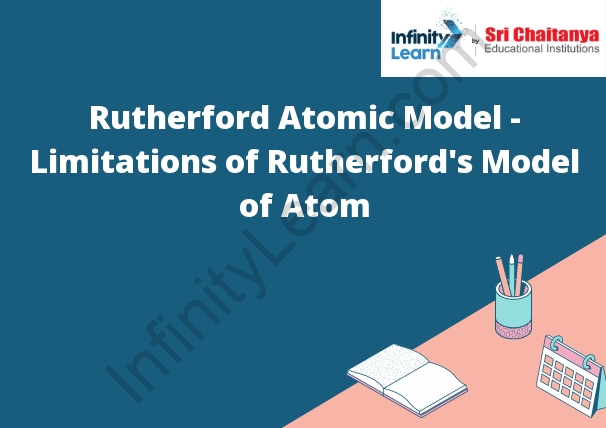Table of Contents
Rutherford Atomic Model
In the Rutherford atomic model, the atom is represented as a small, positively charged nucleus surrounded by electrons. The electrons orbit the nucleus in shells. The number of electrons in each shell is fixed by the element’s atomic number.
 Rutherford’s Experiment
Rutherford’s Experiment
- Rutherford’s experiment was conducted in 1911. It involved firing a stream of alpha particles at a thin sheet of gold. Some of the alpha particles passed straight through the gold, while others were deflected. Rutherford used this information to calculate the size and shape of the gold atom.
- The experiment showed that the gold atom is mostly empty space, with a small, dense nucleus at its center. The nucleus is made up of protons and neutrons. The alpha particles were deflected because they interacted with the protons and neutrons in the nucleus.
Rutherford’s Postulates and Their Salient Features Based on the Experimental s
Rutherford’s postulates are a set of four scientific statements that describe the behavior of atoms. They are:
1. The atom is the smallest particle of an element that has the chemical properties of that element.
2. The atom is composed of a positively charged nucleus and negatively charged electrons.
3. The electrons orbit the nucleus in shells.
4. The number of protons in the nucleus determines the element’s atomic number.
Each of Rutherford’s postulates is based on experimental evidence. The first postulate is supported by the fact that atoms react chemically the way we expect them to based on their element. The second postulate is supported by the observation that atoms have a negative charge, which is due to the negative electrons. The third postulate is supported by the fact that electrons orbit the nucleus in shells. And the fourth postulate is supported by the fact that the number of protons in the nucleus determines the element’s atomic number.
Rutherford Atomic Model
In 1911, Rutherford proposed a model of the atom in which most of the atom’s mass was located in a small, positively charged nucleus. The electrons were located outside the nucleus in a thin, negatively charged shell. This model accounted for the observation that atoms are electrically neutral, and that the mass of an atom is much greater than the sum of the masses of its individual electrons.
Limitations
- Rutherford’s atomic model is a model of the atom that is based on the idea that the atom is mostly empty space with a small, dense nucleus at its center. This model has a number of limitations.
- One limitation of Rutherford’s atomic model is that it does not account for the electron’s orbital motion. Rutherford’s model cannot explain why the electron does not fly out of the atom due to the force of the nucleus’s positive charge.
- Another limitation of Rutherford’s atomic model is that it does not account for the electron’s mass. Rutherford’s model cannot explain why the electron does not fall into the nucleus due to the force of the nucleus’s gravitational pull.
- Finally, Rutherford’s atomic model does not account for the electron’s charge. Rutherford’s model cannot explain why the electron does not fly out of the atom due to the force of the nucleus’s positive charge.
The Rutherford atomic model is a model of the atom that was developed by Ernest Rutherford in 1911. This model is based on the idea that the atom is composed of a small, dense nucleus surrounded by electrons. The Rutherford model has several limitations, which include the following:
- The Rutherford model does not account for the electron’s orbital motion.
- The Rutherford model does not account for the interaction between the electrons and the nucleus.
- The Rutherford model does not account for the electron’s energy levels.
- The Rutherford model does not account for the electron’s distribution in space.



